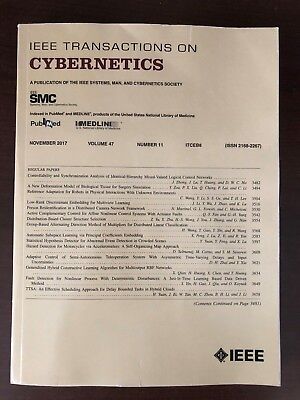Adaptive Backstepping Control for Nonlinear Vehicles With Guaranteed String Stability and Suppressed Cascade Fluctuations.
IF 10.5
1区 计算机科学
Q1 AUTOMATION & CONTROL SYSTEMS
引用次数: 0
Abstract
Recent efforts have yielded substantial progress in backstepping platoon control for connected and automated vehicles (CAVs). While most existing studies focus on guaranteeing individual vehicle stability and string stability, their deployment in nonlinear vehicle platoons may face challenges from the so-called "butterfly effect." That is, even with guaranteed string stability, potential instantaneous spacing changes may imply unpredictable, uncomfortable fluctuations in vehicular velocity and acceleration. To address this issue, a parallel error-fluctuation suppression control framework is proposed in this work. Specifically, tunable triple-layered error boundaries (i.e., spacing, velocity, and acceleration) are constructed to reactively confine all propagated errors within predefined envelopes. By integrating a Barbalat-lemma-enhanced filtering-compensating mechanism and an adaptive approach based on the approximation capability of radial basis function neural networks (RBFNNs), asymptotic error tracking is realized to proactively suppress potential fluctuations. An adaptive backstepping control approach-integrating proactive and reactive suppression strategies-is then proposed to mitigate the unquantifiable "butterfly effect." Theoretical analysis and simulations demonstrate the validity and superiority of the proposed approach.具有保证串稳定性和抑制串级波动的非线性车辆自适应反步控制。
最近的努力在联网和自动驾驶汽车(cav)的反向排控制方面取得了实质性进展。虽然现有的大多数研究都集中在保证车辆的稳定性和串的稳定性上,但它们在非线性车辆排中的部署可能会面临所谓的“蝴蝶效应”的挑战。也就是说,即使保证了管柱的稳定性,潜在的瞬时间距变化也可能意味着车辆速度和加速度的不可预测的、令人不安的波动。为了解决这一问题,本文提出了一种并行误差波动抑制控制框架。具体来说,构建了可调的三层误差边界(即间距、速度和加速度),以反应性地将所有传播的误差限制在预定义的信封内。通过集成barbalat - lema增强滤波补偿机制和基于径向基函数神经网络(RBFNNs)逼近能力的自适应方法,实现渐近误差跟踪,主动抑制潜在的波动。然后提出了一种自适应后退控制方法-整合主动和被动抑制策略-以减轻无法量化的“蝴蝶效应”。理论分析和仿真验证了该方法的有效性和优越性。
本文章由计算机程序翻译,如有差异,请以英文原文为准。
求助全文
约1分钟内获得全文
求助全文
来源期刊

IEEE Transactions on Cybernetics
COMPUTER SCIENCE, ARTIFICIAL INTELLIGENCE-COMPUTER SCIENCE, CYBERNETICS
CiteScore
25.40
自引率
11.00%
发文量
1869
期刊介绍:
The scope of the IEEE Transactions on Cybernetics includes computational approaches to the field of cybernetics. Specifically, the transactions welcomes papers on communication and control across machines or machine, human, and organizations. The scope includes such areas as computational intelligence, computer vision, neural networks, genetic algorithms, machine learning, fuzzy systems, cognitive systems, decision making, and robotics, to the extent that they contribute to the theme of cybernetics or demonstrate an application of cybernetics principles.
 求助内容:
求助内容: 应助结果提醒方式:
应助结果提醒方式:


